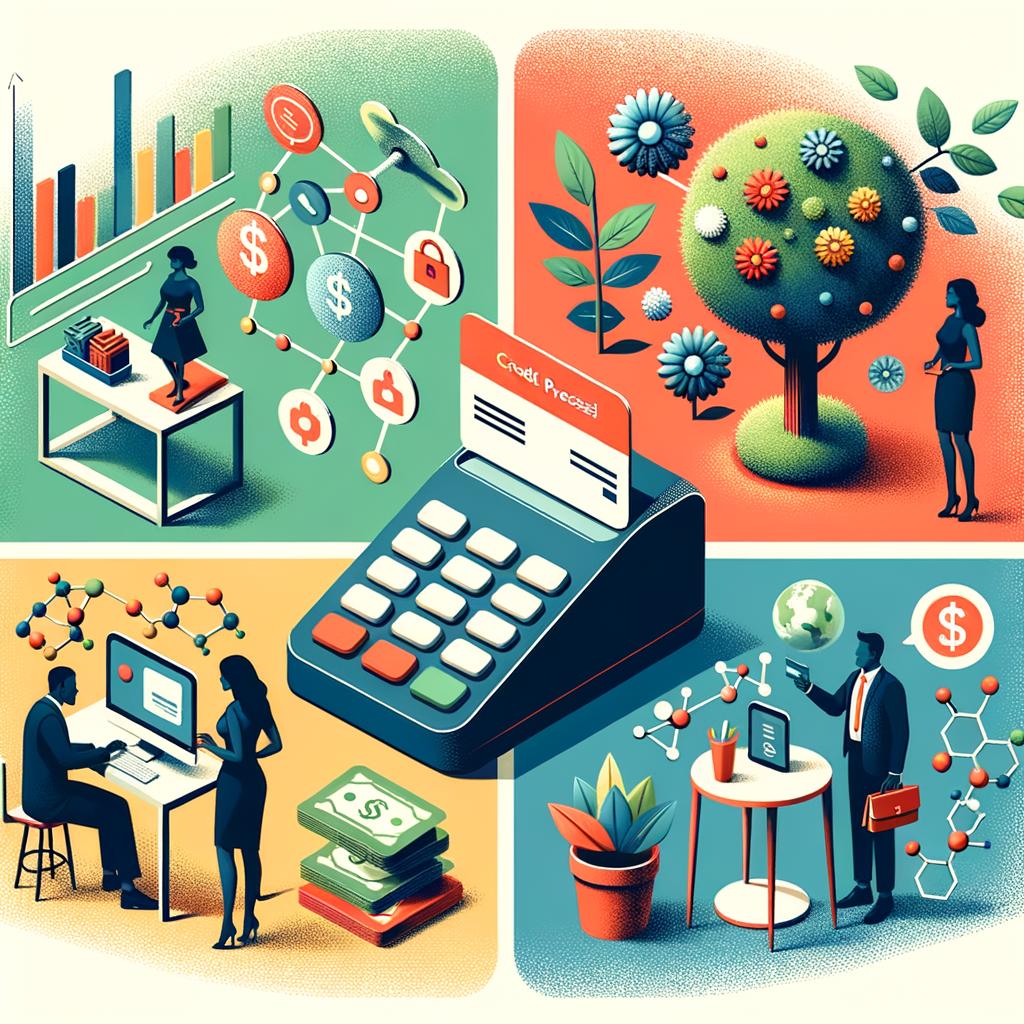In today’s digital age, online transactions have become the norm for consumers around the world. With just a few clicks, we can purchase anything from clothes to groceries to electronics. But with this convenience comes the concern of payment security. How do we know that our personal and financial information is safe when we make a purchase online?
The impact of payment security on consumer trust cannot be overstated. When consumers feel confident that their information is secure, they are more likely to make purchases online. On the other hand, if they have doubts about the security of a website or payment platform, they may choose to take their business elsewhere.
So, what exactly is payment security and how does it affect consumer trust? Payment security refers to the measures put in place to protect consumers’ financial information during transactions. This can include encryption, tokenization, multi-factor authentication, and other security protocols. When consumers see that a website or payment platform takes these measures seriously, they are more likely to trust that their information is safe.
In addition to keeping consumers’ information safe, payment security also plays a role in preventing fraud. When consumers know that a website has strong security measures in place, they are less likely to be victims of scams or identity theft. This gives them peace of mind when making online purchases, leading to increased trust in the company or platform.
Ultimately, understanding the impact of payment security on consumer trust is crucial for businesses that operate online. By prioritizing security measures and being transparent about them, companies can build trust with their customers and encourage them to make more purchases. After all, when consumers feel safe and secure, they are more likely to become loyal customers.
Imagine this scenario: you come home from a long day at work, eager to relax and unwind. As you step through the door, your smart home devices spring into action. The lights dim to a soft, warm glow, your favorite music starts playing, and the air conditioner adjusts to the perfect temperature. But what if, instead of just setting the mood, your smart home devices could also handle your payments seamlessly?
The integration of payment processing in smart home devices is a game-changer in the world of technology and innovation. No longer do you need to fumble for your wallet or juggle multiple apps to pay for services and products. With just a few simple voice commands or taps on your smartphone, you can make payments effortlessly as your smart home devices take care of the rest.
Whether you’re ordering groceries, booking a cleaning service, or purchasing new furniture for your home, payment processing in smart home devices streamlines the entire process. Imagine being able to add items to your shopping cart simply by telling your virtual assistant, or paying for services with the touch of a button on your smart speaker. It’s convenience at its finest, tailored specifically to your lifestyle and needs.
But how does payment processing in smart home devices work, you may ask? It’s all about the seamless integration of technology and connectivity. Through secure payment gateways and encrypted communication channels, your smart home devices are able to process payments efficiently and securely. This means no more worrying about the safety of your financial information or the hassle of manual transactions.
The benefits of integrating payment processing in smart home devices are endless. Not only does it simplify your daily tasks and save you time, but it also enhances the overall smart home experience. Imagine being able to seamlessly transition from controlling your home environment to managing your finances with just a few clicks or commands. It’s the ultimate convenience at your fingertips.
As technology continues to evolve and become more integrated into our daily lives, the possibilities for payment processing in smart home devices are endless. Whether it’s through biometric authentication, voice recognition, or artificial intelligence, the future of payments in the smart home is boundless. So sit back, relax, and let your smart home devices take care of the rest – including your payments. The future is here, and it’s as easy as saying “Alexa, pay for it.
In today’s fast-paced world, where everything is just a click away, securing your card processing has never been more important. Just picture this: you’re lazily scrolling through your favorite online boutique, adding items to your cart left and right, when suddenly you hit the checkout button. As you enter your card information, do you ever wonder where that data goes? Who has access to it? Is it safe from prying eyes and cyber thieves?
Secure card processing is the answer to all your worries. It’s like having a bouncer at the door of a swanky club, checking IDs and making sure only the invited guests get in. In the digital world, secure card processing ensures that your sensitive information is encrypted and safeguarded from any unauthorized access.
Think of it as a shield that protects your valuable assets in the digital realm. Without secure card processing, your financial details could easily fall into the wrong hands, leading to identity theft, fraudulent charges, and a whole lot of headache. So, whether you’re shopping online, booking flights, or paying bills, make sure you look out for that little padlock icon in the browser bar – it’s a sign that your transaction is being securely processed.
But how does secure card processing actually work? It’s like a secret code that only the authorized parties can decipher. When you enter your card details on a website, they are scrambled into an unreadable format using encryption technology. This encrypted data is then securely transmitted to the payment processor, where it is decrypted and processed for payment approval. All this happens in a matter of seconds, without you even realizing it.
So, the next time you’re making a purchase online, take a moment to appreciate the magic of secure card processing. It’s like having a personal bodyguard for your financial information, ensuring that your transactions are safe and sound. And remember, a little padlock can go a long way in keeping your money where it belongs – in your pocket, not in the hands of cyber criminals.
If you’ve ever experienced the frustration of your card being used fraudulently, you’re not alone. In today’s digital age, card fraud is becoming increasingly prevalent, making it more important than ever to understand the liability shift that occurs in these situations.
So, what exactly is the liability shift in fraudulent card transactions? Simply put, it’s the shift in responsibility from the cardholder to the card issuer or merchant when a fraudulent transaction takes place. In the past, cardholders were often left holding the bag when their cards were used without their authorization. However, with the introduction of chip technology and EMV cards, the liability for fraudulent transactions has shifted to the party who has not adopted these security measures.
But how does this shift in liability actually work? Well, it all comes down to who is more equipped to prevent fraud in a transaction. With EMV technology, the chip in your card creates a unique code for each transaction, making it much harder for fraudsters to clone your card or steal your information. Because of this added security measure, if a fraudulent transaction occurs on a chip-enabled card, the liability falls on the party that has not implemented this technology – usually the merchant.
Understanding the liability shift in fraudulent card transactions is crucial for both cardholders and merchants. As a cardholder, it means you can rest assured knowing that you won’t be held responsible for fraudulent charges on your EMV card. And as a merchant, it’s a reminder of the importance of investing in secure payment processing technology to protect both your customers and your business.
So, next time you swipe or dip your card, take a moment to appreciate the added security that comes with EMV technology. And remember, when it comes to fraudulent transactions, knowledge is power – and understanding the liability shift is the first step in protecting yourself and your finances.
In a world where cyber attacks are becoming more prevalent, one area that is particularly vulnerable is card payment systems. With the rise of online shopping and the frequent use of credit and debit cards for transactions, ensuring the security of payment data has never been more critical. Implementing robust data security measures in card payment systems is essential to protect both consumers and businesses from potential breaches.
One way to improve data security in card payment systems is to encrypt sensitive information during transmission. By using encryption protocols, such as Secure Socket Layer (SSL) or Transport Layer Security (TLS), data can be securely transmitted between the cardholder and the payment processor. This ensures that hackers cannot intercept and steal valuable information such as card numbers and personal details.
Another important measure is to implement multi-factor authentication for card transactions. This involves requiring users to provide more than one form of verification before completing a payment, such as a password and a one-time code sent to their mobile device. By adding this extra layer of security, businesses can significantly reduce the risk of unauthorized access to payment data.
Regularly updating and patching software is also crucial in maintaining data security in card payment systems. Software vendors often release updates to address vulnerabilities or weaknesses that could be exploited by cyber criminals. By staying current with software updates, businesses can ensure that their payment systems are protected against the latest threats.
In addition, businesses should also consider implementing tokenization technology in their card payment systems. Tokenization replaces sensitive card data with a unique identifier, or token, that is meaningless to hackers. This reduces the risk of data theft, as even if the token is intercepted, it cannot be used to make unauthorized transactions.
Overall, implementing robust data security measures in card payment systems is crucial in today’s digital age. By encrypting data, implementing multi-factor authentication, regularly updating software, and utilizing tokenization technology, businesses can protect themselves and their customers from potential cyber threats. It’s time to take action and ensure the security of card payment systems for a safer and more secure future.
Are you a small retail business looking to streamline your card processing system? Look no further! Tailoring card processing solutions specifically for small retail businesses can make a world of difference in the efficiency and profitability of your operations.
One of the key advantages of personalized card processing solutions for small retail businesses is the ability to cater to your specific needs and budget constraints. With a tailored approach, you can ensure that you are only paying for the services that you actually need, without any unnecessary bells and whistles that can drive up costs.
Furthermore, customized card processing solutions can help improve the overall customer experience at your store. By providing a seamless and secure payment process, you can build trust with your customers and encourage repeat business. Additionally, with the advent of contactless payment options, you can offer your customers a convenient and speedy checkout experience that will keep them coming back for more.
Choosing the right card processing provider is crucial when it comes to tailoring solutions for small retail businesses. Look for a provider that offers competitive rates, reliable customer service, and innovative technology that can help your business stay ahead of the curve. With the right partner by your side, you can take your small retail business to new heights and set yourself up for success in the competitive retail landscape.
In conclusion, by customizing your card processing solutions to fit the unique needs of your small retail business, you can unlock a world of benefits that will help you grow and thrive in the ever-evolving marketplace. So why wait? Start exploring your options today and take your business to the next level with tailored card processing solutions.
Shopping online has revolutionized the way we purchase goods and services, making it easier and more convenient than ever before. But behind the scenes of this seamless online shopping experience is a complex process known as e-commerce payment processing. Understanding the costs involved in this process is crucial for businesses looking to maximize their profits while providing a seamless online shopping experience for their customers.
When it comes to e-commerce payment processing, there are a few key players involved. First, there’s the payment gateway, which serves as the intermediary between the customer’s bank and the merchant’s bank, facilitating the transfer of funds securely. Then, there’s the merchant account provider, which processes the actual payment and deposits the funds into the merchant’s account. Finally, there are the credit card networks, such as Visa and MasterCard, which facilitate the transfer of funds between the customer’s bank and the merchant’s bank.
Of course, all these players come at a cost. The most obvious cost is the transaction fee, which is typically a small percentage of the total purchase amount plus a flat fee. This fee is split between the payment gateway, the merchant account provider, and the credit card network. In addition to transaction fees, there may also be other costs involved, such as setup fees, monthly fees, and chargeback fees.
One of the most important factors to consider when it comes to e-commerce payment processing costs is the interchange fee. This fee is set by the credit card networks and is typically the largest portion of the transaction fee. It is determined based on a number of factors, including the type of card used, the type of transaction (e.g. online vs. in-store), and the risk associated with the transaction. Understanding how interchange fees are calculated can help businesses negotiate better rates with their merchant account provider and minimize costs.
Another important factor to consider is the payment gateway fee. This fee is charged by the payment gateway for processing each transaction and can vary depending on the volume of transactions processed. Choosing the right payment gateway provider and understanding their fee structure can help businesses minimize costs and maximize profits.
In conclusion, e-commerce payment processing comes with a number of costs that businesses need to be aware of in order to maximize their profits. By understanding the various players involved in the process, the factors that affect interchange fees, and the payment gateway fees, businesses can negotiate better rates with their service providers and minimize costs. Ultimately, a deep understanding of e-commerce payment processing costs can help businesses provide a seamless online shopping experience for their customers while boosting their bottom line.
As technology continues to revolutionize our world, one of the most exciting developments in recent years has been the rise of mobile wallets. Gone are the days of fumbling through your purse or wallet to find the right card or cash – now, all you need is your phone.
But what does this mean for consumers and businesses alike? Let’s take a closer look at the impact of mobile wallets on our everyday lives.
For consumers, mobile wallets offer a convenient and secure way to make payments on the go. With just a few taps on your phone, you can easily pay for groceries, order a ride share, or even split the bill with friends. No more worrying about carrying around multiple credit cards or remembering to bring cash – everything you need is right at your fingertips.
But the benefits of mobile wallets extend beyond just convenience. They also offer enhanced security features, such as fingerprint or face recognition, to help protect your financial information from potential hackers. Plus, with the ability to store loyalty cards and receive personalized offers and discounts, you can save both time and money while shopping.
On the business side of things, mobile wallets present a unique opportunity to attract and retain customers. By offering a seamless and hassle-free payment experience, businesses can increase customer satisfaction and loyalty. Additionally, mobile wallets enable businesses to track customer spending habits and preferences, allowing them to tailor their marketing efforts and drive sales.
But perhaps the most exciting aspect of the rise of mobile wallets is the potential for innovation and growth in the financial technology industry. As more consumers embrace mobile payment solutions, we can expect to see new features and functionalities that will continue to improve the overall user experience.
So whether you’re a consumer looking for a convenient way to pay, or a business looking to stay ahead of the curve, it’s clear that mobile wallets are here to stay. Embrace the future of payments with mobile wallets and enjoy a more seamless and secure shopping experience.
In today’s fast-paced digital world, global payment models have become increasingly diverse and complex. From traditional wire transfers to mobile wallets and cryptocurrencies, there are a myriad of options available for individuals and businesses to send and receive money across borders. But with so many choices, it can be overwhelming to understand the differences between each payment model.
One of the most common global payment models is the traditional wire transfer. This method involves the transfer of funds from one bank account to another, typically through a network of intermediary banks. While wire transfers are often seen as a secure and reliable way to send money globally, they can be costly and time-consuming. Fees can add up quickly, especially for transactions involving multiple currencies or countries, and transfers can take several days to process.
On the other end of the spectrum are mobile wallets, which have skyrocketed in popularity in recent years. Services like PayPal, Venmo, and Apple Pay allow users to store funds digitally and make payments with just a few taps on their smartphones. Mobile wallets are convenient, fast, and often more cost-effective than traditional bank transfers. However, they may not be accepted everywhere, and users may face limitations on the amount of money they can send or receive.
Another emerging global payment model is the use of cryptocurrencies like Bitcoin and Ethereum. These digital currencies are decentralized and exist solely in electronic form, allowing for peer-to-peer transactions without the need for banks or financial institutions. While cryptocurrencies offer a level of anonymity and security that traditional payment methods do not, they are highly volatile and can be complex to understand and use.
In addition to these payment models, there are countless other options available, such as prepaid cards, online payment platforms, and alternative payment providers. The key to navigating this landscape is to understand the pros and cons of each model and choose the one that best fits your needs and preferences. Whether you are a small business owner looking to expand globally or a frequent traveler sending money back home, there is a global payment model out there for you. By staying informed and exploring your options, you can make confident and informed decisions about how to move money across borders.
Have you ever stopped to think about why you choose to pay for things the way you do? Whether you prefer tapping your card or carrying cash, there’s a fascinating psychology behind consumer payment choices that can reveal a lot about our behavior and preferences.
We all have our own unique reasons for choosing how to pay for our purchases. For some, the convenience of contactless payments is irresistible – why bother fumbling around for cash or typing in a pin when you can just wave your card or phone? Others might have a preference for the tangibility of cash – the feeling of handing over physical money can make us more aware of what we’re spending, leading to more thoughtful purchases.
But it’s not just about convenience or tangibility. Our payment choices can also be influenced by our emotions and perceptions. Research has shown that people tend to spend more when using credit cards compared to debit cards or cash. The reason? Credit cards create a sense of dissociation between the act of paying and the pain of parting with our hard-earned money, making it easier for us to overspend.
The way we pay can also be influenced by our past experiences and upbringing. If we grew up in a household that predominantly used cash, we might feel more comfortable carrying and using physical currency. On the other hand, if we were introduced to online banking at a young age, we might feel more at ease with digital payments.
So the next time you reach for your wallet or phone to pay, take a moment to reflect on the factors that are influencing your decision. Are you paying with emotion, convenience, or habit? Understanding the psychology behind consumer payment choices can not only help you make more informed decisions, but also shed light on the intricate ways in which our minds shape our spending habits.











